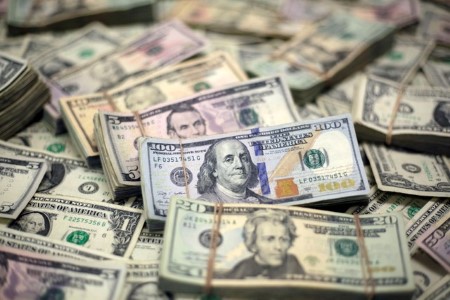




Philippines Trade Update: Trade trajectories trend along
 DOWNLOAD
DOWNLOAD

Policy Rate Updates: Double cut finale
 DOWNLOAD
DOWNLOAD

Monthly Economic Update: One for the road
 DOWNLOAD
DOWNLOAD


Yields fall as inflation largely meets expectations

Longer-dated US Treasury yields fell on Friday after data showed that inflation gains in March were largely in line with economists’ expectations, easing concerns about the closely watched report showing a much higher-than-expected price jump.
The personal consumption expenditures (PCE) price index increased 0.3% last month for an annual increase of 2.7%. Economists polled by Reuters had forecast the index climbing 0.3% on the month and 2.6% year on year.
Core prices also rose 0.3% during the month, as expected, for an annual gain of 2.8%, above economists’ expectations for a 2.7% increase.
A hotter-than-expected consumer price inflation report for March released earlier this month raised concerns that price pressures will take longer to decline closer to the Federal Reserve’s 2% annual target.
Gross domestic product (GDP) data for the first quarter released on Thursday also showed inflation rising more than previously thought.
“Investors were braced for a still slightly hot inflation number thanks to the first quarter GDP report,” said Brian Jacobsen, chief economist at Annex Wealth Management in Menomonee Falls, Wisconsin.
University of Michigan sentiment data, meanwhile, showed that consumers raised their one-year inflation outlook to 3.2%.
Traders have pushed back expectations on when the Fed is likely to begin cutting rates as price pressures remain elevated.
That repricing may give Fed Chair Jerome Powell room to acknowledge a lower chance of interest rate cuts in the near term after the US central bank concludes its two-day meeting on Wednesday, without roiling the market.
“They’re now in a place where the market is expecting a whole lot less,” said Stephen Gola, head of US Treasuries Sales & Trading at StoneX Group in New York. “If the Fed changes its tone a little bit it’s not going to shock anyone.”
Fed funds futures traders are now pricing in one-and-a-half 25 basis point cuts this year, with the first cut likely in September. That compares to expectations of three cuts at the Fed’s March meeting, which were anticipated to begin as soon as June.
Gola expects Powell to make similar comments after the Fed meeting to those he made last week, when he indicated that monetary policy needs to be restrictive for longer.
“The recent data have clearly not given us greater confidence and instead indicate that it’s likely to take longer than expected to achieve that confidence,” Powell said.
Benchmark 10-year Treasury note yields were last down 4 basis points on the day at 4.671%, after reaching 4.739% on Thursday, the highest since Nov. 2.
Two-year yields were little changed at 4.998%, after peaking at 5.027% on Thursday, the highest since Nov. 14.
The inversion in the yield curve between two- and 10-year notes widened three basis points to minus 33 basis points.
The Treasury Department is also expected to leave most auction sizes unchanged when it announces its refunding plans for the coming quarter next week, and is likely to launch a bond buyback program.
(Reporting By Karen Brettell; Additional reporting by Chuck Mikolajczak; Editing by Kirsten Donovan)
This article originally appeared on reuters.com





 By Reuters
By Reuters